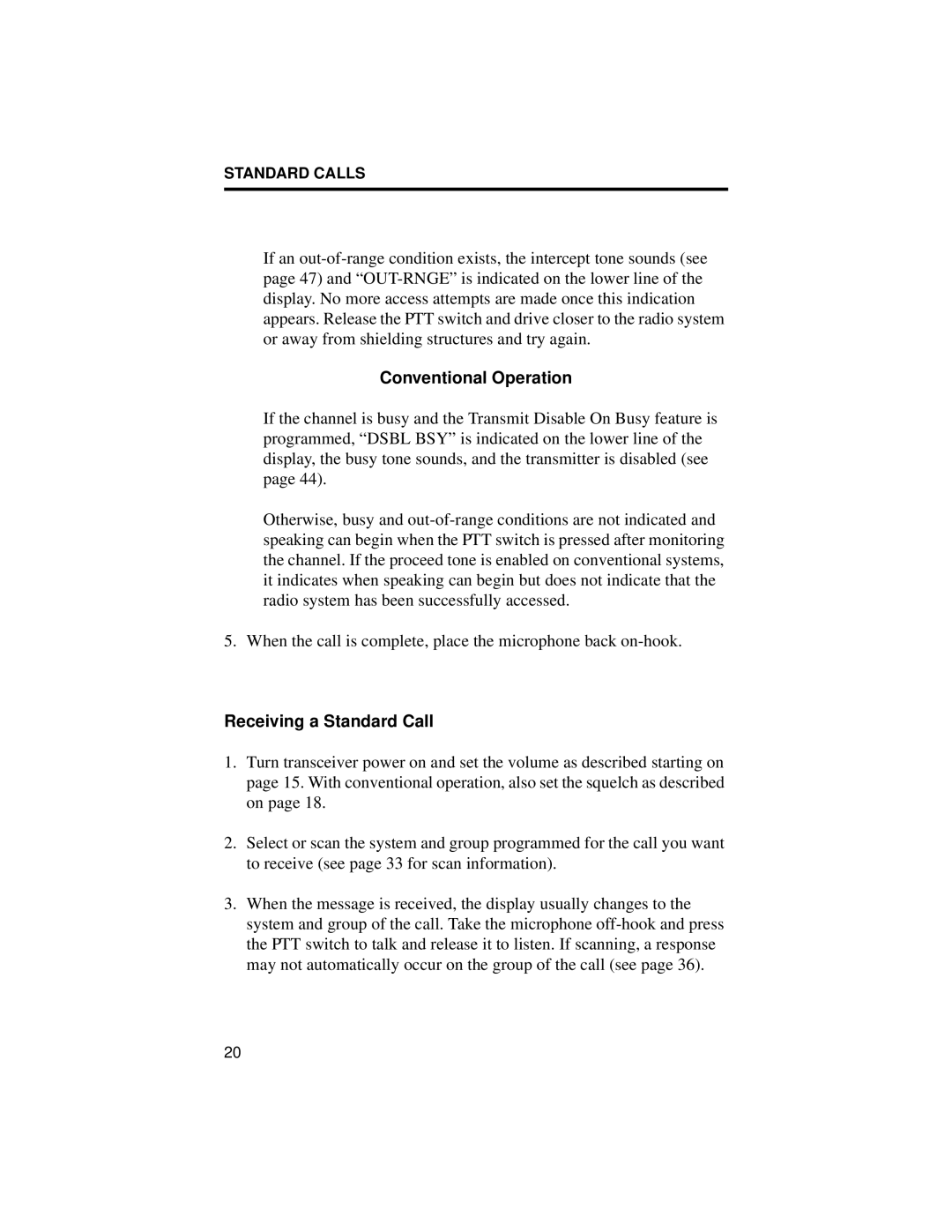
STANDARD CALLS
•If an out-of-range condition exists, the intercept tone sounds (see page 47) and “OUT-RNGE” is indicated on the lower line of the display. No more access attempts are made once this indication appears. Release the PTT switch and drive closer to the radio system or away from shielding structures and try again.
Conventional Operation
•If the channel is busy and the Transmit Disable On Busy feature is programmed, “DSBL BSY” is indicated on the lower line of the display, the busy tone sounds, and the transmitter is disabled (see page 44).
•Otherwise, busy and out-of-range conditions are not indicated and speaking can begin when the PTT switch is pressed after monitoring the channel. If the proceed tone is enabled on conventional systems, it indicates when speaking can begin but does not indicate that the radio system has been successfully accessed.
5.When the call is complete, place the microphone back on-hook.
Receiving a Standard Call
1.Turn transceiver power on and set the volume as described starting on page 15. With conventional operation, also set the squelch as described on page 18.
2.Select or scan the system and group programmed for the call you want to receive (see page 33 for scan information).
3.When the message is received, the display usually changes to the system and group of the call. Take the microphone off-hook and press the PTT switch to talk and release it to listen. If scanning, a response may not automatically occur on the group of the call (see page 36).
